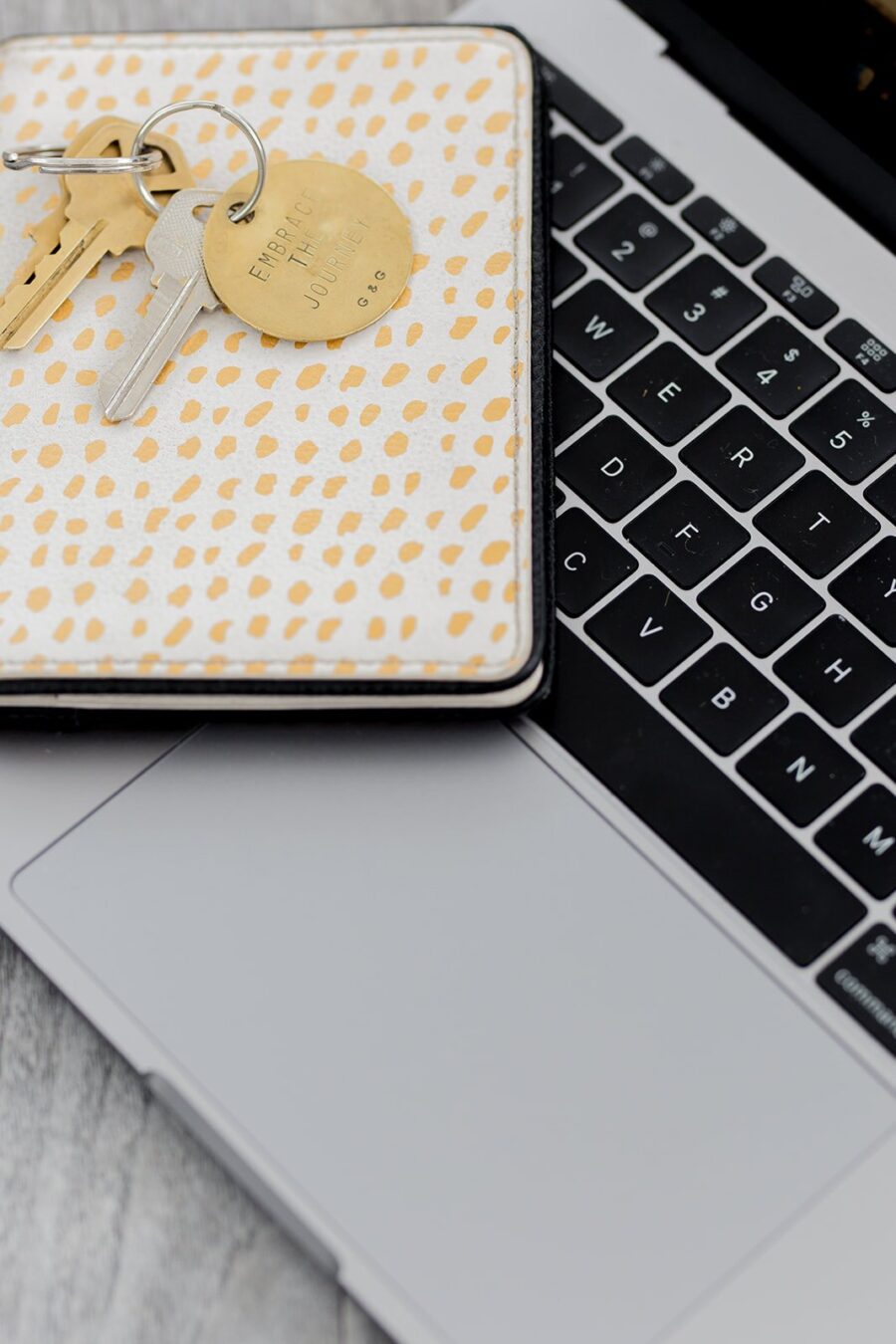
What Is Cryptocurrency And What Should We Know About It?
The 411 on Cryptocurrency, From Bitcoin to Blockchain
The first time I heard of cryptocurrency, I didn’t understand it. I was this meme in real time. Currency I’d never physically see, that was worth hundreds or thousands of US dollars? As a feel-it-in-my-hands type of person, I thought, “Maybe I’ll just stick with cash.”
But over time, cryptocurrency grew in the media, piquing my interest. I eventually bought a slice of the Bitcoin pie (more like a sliver, I suppose). I gave Ethereum a try, buying and selling like I was a day trader (let it be known that I am not). I even set up the nonprofit I previously worked at to accept cryptocurrency donations, totalling tens of thousands of dollars in gifts the organization would have otherwise not received.
After this level of research, cryptocurrency isn’t as daunting to me. But it’s still quite, well… cryptic in the mainstream. What even is crypto? Is it secure? Is it for me? If you have the same pressing questions, here’s the primer on all things cryptocurrency.
What is crypto, and how does it work?
We can’t understand cryptocurrency without first understanding our more standard definition of currency, like the US dollar. This Reddit response from Shaun Sanders does an excellent job of sharing how currencies work and evolve. Put simply: Most currency, like paper or coins, are issued by a government and used to exchange goods or services.
“Whereas the United States government centralizes the dollar, cryptocurrency is fully decentralized. No single person, entity, or financial institution owns it.”
Cryptocurrencies, then, are the digital equivalents of currencies—think virtual cash. Bitcoin, the first-ever crypto, remains the most popular. Among the many thousands out there, other well-known cryptocurrencies include Ethereum, Link, and, more recently thanks to a meme, Dogecoin.
Most importantly, whereas the United States government centralizes the dollar, most cryptocurrency is fully decentralized. No single person, entity, or financial institution owns them, which means we can’t just make more of them or remove them, and each currency has its own standards or max supply. For example, only 21 million Bitcoin can ever be mined, inherently creating supply and demand, while others have more limitless potential. And like the stock market, the price fluctuates based on a number of factors including scarcity, media coverage, speculation, and adaptability in the mainstream. (More on how cryptocurrency gains or loses value here.)
Because of this, Alex Wilson, Co-Founder of The Giving Block, an organization leveraging cryptocurrency for nonprofits, considers crypto “money for the people, by the people.” He shares, “It’s meant to disrupt traditional banking systems by democratizing money and removing [traditional] middle-men, thereby giving power back to the people.”
“Like casino or arcade chips, cryptocurrencies can be cashed in.”
Rather than a physical cash reserve, these cryptocurrencies are “mined” in limited quantities from a digital token system. As much as I’d love to envision mining for actual coins like Indiana Jones, digital mining uses advanced software to solve complex computations related to earlier crypto transactions. Anyone can technically download free software to be a miner, but it takes an enormous amount of energy and storage space to do so. Ultimately though, the process both maintains the security of existing exchanges and adds new crypto into circulation. (This technical primer from CoinDesk dives deeper into mining and how it came to be.)
Once purchased, any crypto you own will live in a virtual wallet made up of random letters and numbers; like casino or arcade chips, these currencies can then be cashed in. For example, at time of publishing, my digital wallet currently holds 0.035 of Bitcoin, which I could sell for approximately $1,100.
But is it secure? I’ve heard about hacks!
In short: Yes, it’s secure.
Cryptocurrency transactions, whether a purchase or a sale, are mostly recorded in a blockchain (also known as a ledger). It’s public, meaning that anyone can be a part of this database, but the data itself is secured using cryptography, in order to prevent fraud. Wilson explains that, while the transaction is public, you’d only see two wallet addresses made up of those random letters and numbers in an exchange, not necessarily the names of the people who own the wallets.
“Cryptocurrency one of the most transparent currencies around, unlike cash which can exchange thousands of hands without a trace.”
The bottom line? Most cryptocurrencies are some of the most transparent currencies around, unlike cash which can exchange thousands of hands without a trace.
Wilson reminds us, “Despite the headlines you may have seen, cryptocurrencies like Bitcoin have never been ‘hacked.’ It’s one of the most secure networks in the world and is becoming more secure with time. Those headlines you’ve seen about ‘hacks’ are actually people with personal poor security practices. If a bank robbery happens, you don’t see headlines about a US dollar hack!” The best security practices include using a strong password, not reusing passwords, and using two-factor authentication whenever possible.
What about the environmental impact?
In recent months, questions have been raised about the sustainability of cryptocurrency—and they’re worth asking.
Experts agree and acknowledge that the process of mining crypto requires a lot of energy—even more than the annual energy consumption of entire countries like Sweden. For example, Bitcoin is estimated to generate 22-23 million metric tons of CO2 per year. The energy comes from the computer processing power and electricity needed to mine, with fossil fuel as an energy source.
“Many users, too, are searching for eco-friendly cryptocurrencies that are less energy-intensive.”
That’s not to say traditional financial institutions are any better, though. Nearly half of banks are ignoring their emissions, yet their reduced emissions are critical to our climate future. What’s worse, banks’ portfolio companies (including their lending, underwriting or investment portfolios) are emitting 700 times more emissions on average than the operations of the banks themselves. Considering that reported financial emissions conservatively accounted for 1.04 gigatons of carbon dioxide, more regulation in the financial sector at large is very much needed. And fast.
Similar to banking, there is a concerning footprint from cryptocurrencies like Bitcoin. But miners are now seeking out renewable and alternative energy sources. Many users, too, are searching for eco-friendly cryptocurrencies that are less energy-intensive, like Nano, Hedera, or Bitgreen. Nano and Hedera, for example, don’t use mining at all, opting for low-energy instant processes instead. BitGreen is a community-driven currency rewarding those who do eco-friendly activities like bike riding.
Should I buy cryptocurrency? What should I consider before I do?
With 100+ million people using crypto worldwide, anyone can join the space, but as with any financial asset, there are crucial aspects to consider.
First and foremost, Wilson recommends reading everything you can about crypto, including major media outlets like CoinDesk, Cointelegraph, Decrypt, and The Block. You can also check out women-led resources like Money With Katie or Girl Gone Crypto, which offer digestible content intended to demystify this complicated space.
“Cryptocurrency is still a very risky investment, so never invest anything you aren’t willing to lose.”
“Take it slow before making any immediate decisions,” Wilson encourages. “Make sure you have a clear reason [and understanding] for why you are investing.” Is it because you see Bitcoin as the currency of the future? Because central banks are no longer valuing your money (or are devaluing via inflation)? Or because you’re interested in trying it out, while also hoping for modest financial gains? (On that last note, don’t forget about the capital gains tax you’ll owe.)
Given that cryptocurrency is relatively new and isn’t backed by any centralized institution—like banks insured by the FDIC—it’s still a very risky investment, so never invest anything you aren’t willing to lose. In early 2021, I invested a few hundred dollars in Dogecoin when it was at $0.03. A few months later, my holdings went up to $8,000—but came crashing down within a few days. I’m luckily still up from my original purchase, but it was a painful reminder that, like any investment, these changes can be volatile. Sometimes, you are better off not checking day-to-day, like with a regular 401K or index fund you may have.
Remember: There is a lot of hype in this space currently, so take care not to put all your eggs in one basket. Just as you wouldn’t invest your life savings with one company, don’t feel the need to invest everything you have with crypto. You can start with $10 if you want!
Should you decide to invest, some of the most popular platforms to start trading include Coinbase, Voyager, Binance, or Gemini. Take time to read how each third-party system works, any associated fees, and consumer feedback before moving forward. For larger investments, consider speaking with a financial advisor familiar with cryptocurrency.
“Given that cryptocurrencies thrive off of supply and demand, we as consumers have a chance to directly impact its growth or demise.”
Given that cryptocurrencies thrive off of supply and demand, we as consumers have a chance to directly impact its growth or demise. The excitement around cryptocurrency is palpable. But it’s also a nuanced system requiring strategic planning—and thoughtful questions around its future, sustainability, and value in a capitalist economy.
May we use this knowledge to make informed decisions and ask the right questions about this budding currency and all its potential.
Henah Velez (she/her) is an Editor at The Good Trade. She holds a Master’s in Social Entrepreneurship and is a proud Rutgers grad. Originally from NJ, Henah’s now in Santa Barbara, CA, where she loves shopping small, hanging with her pets, or traveling. Say hi on Instagram!




